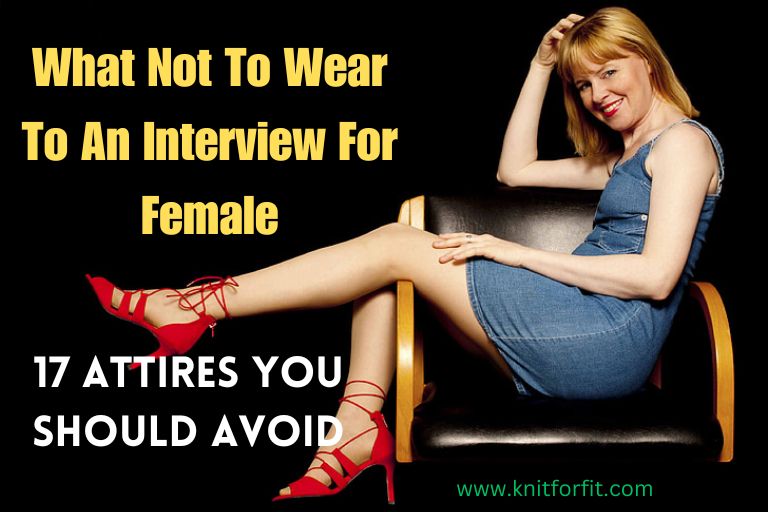Topic: What Not to Wear to an Interview Female.
Answer –
Do not wear revealing or casual attire to an interview. Dress professionally and conservatively. I will discuss what not to wear to an interview female, providing you with valuable insights and tips to ensure you dress appropriately for success. By following these guidelines, you will increase your chances of making a positive first impression and landing your dream job.
So, let’s dive in and explore the do’s and don’ts of interview attire for women. First impressions are crucial in a job interview, and what you wear plays a significant role in shaping that impression. Dressing inappropriately may lead to a negative perception of your professionalism and suitability for the position. To make a good impression, it is important to dress professionally and conservatively.
Why Proper Clothing Is Important For An Interview (Importance of Dressing Well for a Job Interview)
Proper clothing is important for an interview because it plays a significant role in making a positive first impression on your potential employer. Here are several reasons why dressing appropriately for an interview is crucial:
Professionalism:
Wearing appropriate clothing demonstrates that you take the interview seriously and understand the professional nature of the setting. It shows that you are respectful of the company’s culture and values.
First Impression:
As the saying goes, “You never get a second chance to make a first impression.” Your appearance is often the first thing that interviewers notice about you, and it can influence their perception of your suitability for the role.
Confidence:
Dressing well can boost your confidence. When you feel good about how you look, it can positively impact your demeanor, body language, and overall performance during the interview.
Respect for the Company:
Wearing proper attire shows that you’ve taken the time to research the company’s culture and expectations. It indicates that you’re interested in aligning with their values and being a good fit for the organization.
Cultural Fit:
Different companies have different dress codes. By dressing appropriately, you demonstrate that you understand and are comfortable with the company’s culture. This can make you seem like a more natural fit for the team.
Attention to Detail:
Dressing professionally showcases your attention to detail and your ability to follow instructions. These qualities are often sought after by employers, regardless of the specific role.
Competence:
Your clothing choices can influence the interviewer’s perception of your competence and readiness for the job. Well-dressed candidates are often perceived as more prepared and capable.
Minimizes Distractions:
When you dress inappropriately, it can create distractions during the interview. Interviewers might focus on your outfit rather than your qualifications and answers to their questions.
Reflects Your Personal Brand:
Your attire contributes to your personal brand, which includes your skills, personality, and values. Dressing appropriately helps align your personal brand with the image you want to convey to potential employers.
Shows Effort and Enthusiasm:
Putting effort into selecting appropriate clothing demonstrates your enthusiasm for the position and your willingness to go the extra mile to make a positive impression.
When preparing for an interview, it’s essential to research the company’s dress code and industry norms. If you’re unsure, it’s generally better to be slightly overdressed than underdressed. Opt for conservative, professional attire that is well-fitted, clean, and neatly presented. Remember that your clothing is just one aspect of the overall impression you’ll make, but it’s a visible and impactful one.
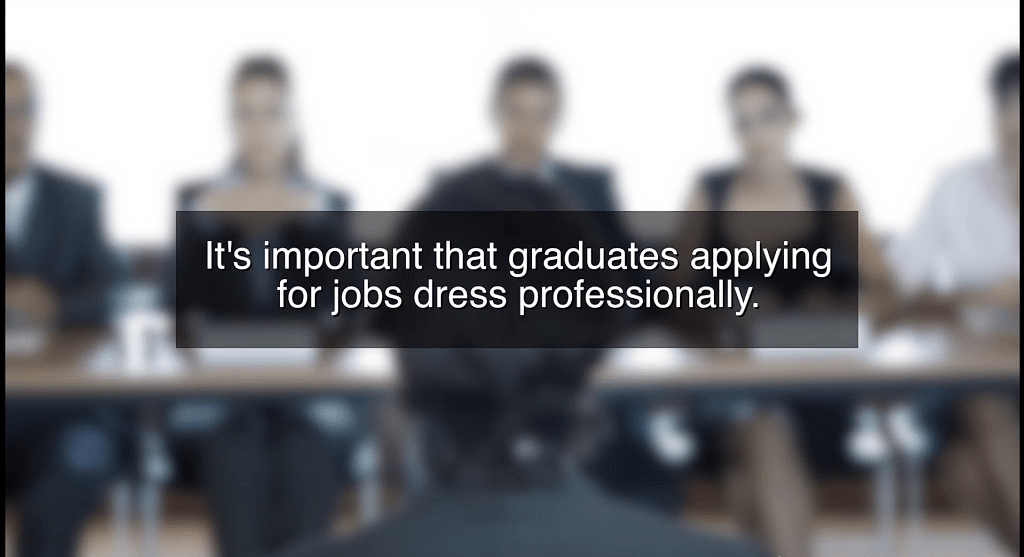
17 Attires You Should Avoid: What Not to Wear to an Interview Female
Here are some more detailed guidelines about what not to wear to a job interview:
1. Casual Clothing:
Avoid wearing casual clothing like jeans, t-shirts, sweatshirts, and shorts. These items are generally too informal for a professional interview setting.
2. Revealing Attire:
Stay away from clothing that reveals too much skin or is overly tight. Avoid low-cut tops, short skirts, plunging necklines, and clothing that may be considered provocative.
3. Strong Patterns and Bright Colors:
While a touch of color is acceptable, avoid wearing clothing with overly loud or distracting patterns, as well as excessively bright colors. Opt for more neutral and muted tones that convey professionalism.
4. Unprofessional Footwear:
Skip casual shoes like flip-flops, sneakers, and open-toed sandals. Instead, opt for closed-toe flats, heels, or dress shoes that match the formality of the interview.
5. Heavy Makeup:
Choose makeup that enhances your features without being overpowering. Avoid heavy or dramatic makeup that could distract from your qualifications.
6. Excessive Jewelry:
While jewelry can add elegance, avoid wearing excessive or noisy accessories. Limit the number of bracelets, rings, and large statement pieces.
7. Strong Fragrances:
Refrain from wearing heavy perfumes or fragrances that might be overwhelming in close quarters. Opt for a subtle scent or skip fragrance altogether.
8. Untidy Clothing:
Ensure your clothing is clean, well-ironed, and in good condition. Wrinkled or unkempt attire can convey a lack of attention to detail.
9. Visible Undergarments:
Make sure your undergarments are not visible through your clothing. This includes bra straps, panty lines, and any other undergarment details.
10. Ill-Fitting Attire:
Wearing clothing that is too tight or too loose can give the impression of unprofessionalism. Choose clothing that fits well and flatters your body type.
11. Inappropriate Footwear:
Avoid wearing shoes that are scuffed, worn out, or overly casual. Opt for polished shoes that match the formality of the interview.
12. Casual Outerwear:
If needed, wear a professional-looking blazer or coat that complements your outfit. Avoid casual jackets, hoodies, or overly informal outerwear.
13. Casual Bags:
Opt for a professional bag or briefcase to carry your belongings, instead of using casual backpacks or oversized bags.
14. Unkempt Hair:
Ensure your hair is clean, styled neatly, and not overly elaborate. Avoid hairstyles that may be distracting or unconventional.
15. Torn or Worn Clothing:
Don’t wear clothing that is torn, faded, or has visible signs of wear and tear. Your attire should be in good condition.
16. Distracting Accessories:
Avoid accessories that could draw attention away from your face and your responses. This includes large, flashy items that might distract the interviewer.
17. Sloppy Grooming:
Maintain a well-groomed appearance, including clean nails, trimmed facial hair (if applicable), and overall neatness.
The goal of dressing for a job interview is to make a positive impression and show that you take the opportunity seriously. Research the company’s dress code and industry norms to align your attire with the company culture.
When in doubt, it’s better to lean towards a more conservative and professional outfit choice. Your clothing should complement your skills, experience, and qualifications, rather than detract from them.
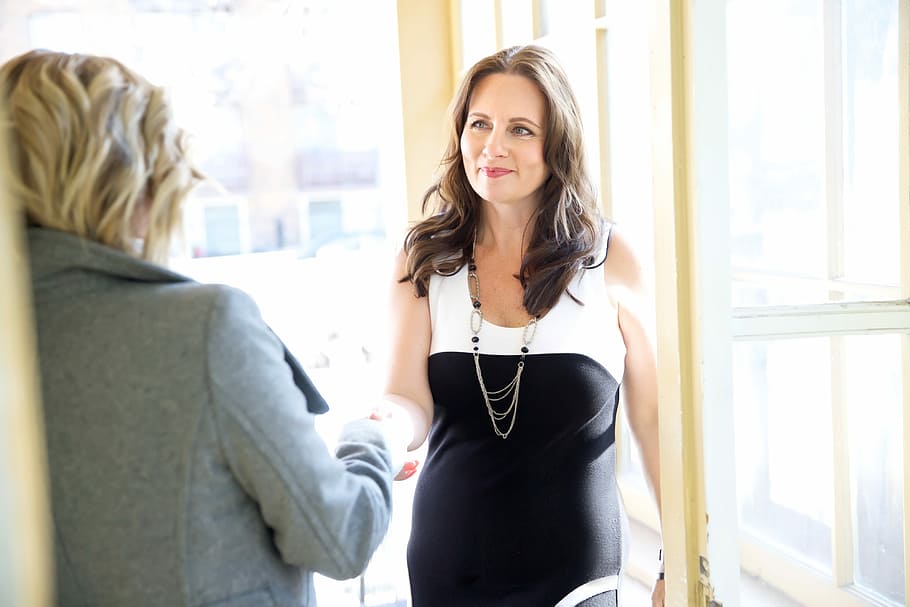
What Not to Wear to an Interview Female: 7 Fashion Faux Pas To Avoid At Interviews Female
Discover the top fashion faux pas to avoid when dressing for a female interview. Follow these tips to ensure you make a professional and stylish impression.
Dressing appropriately for a job interview is crucial because it gives your potential employer a glimpse of your professionalism and suitability for the role. First impressions matter, and your outfit plays a significant role in that. To help you make the best impression, here are seven fashion faux pas to avoid when dressing for an interview.
1. Overwhelming Prints And Patterns:
- Avoid wearing clothes with overwhelming prints and patterns as they can be distracting and give off a casual vibe. Stick to solid colors and subtle patterns to convey a more polished and professional image.
2. Excessive Accessories: Less Is More:
- While accessories can add personality to your outfit, wearing too many can be overwhelming and draw attention away from your qualifications. Opt for minimalistic accessories that complement your outfit without overpowering it.
3. Revealing Or Ill-Fitting Clothes:
- It’s essential to dress modestly for an interview. Avoid wearing clothes that are too revealing, such as low-cut tops or short skirts. Equally important is wearing clothes that fit properly. Ill-fitting clothes can give the impression that you’re unprofessional and not detail-oriented.
4. Casual Or Inappropriate Footwear:
- Your footwear choice can make or break your entire look. Avoid wearing casual shoes such as sneakers or flip-flops to an interview. Opt for closed-toe shoes like pumps or flats that are clean, polished, and appropriate for a professional setting.
5. Heavy Makeup And Strong Perfume:
- While personal grooming is important, it’s best to keep your makeup natural and minimal for an interview. Heavy makeup can be distracting and give the impression that you’re more focused on your appearance than the job itself. Similarly, strong perfume can overwhelm and even trigger allergies in some people.
6. Unprofessional Hairstyles:
- Your hairstyle should be neat, tidy, and professional. Avoid overly elaborate or trendy hairstyles that can divert attention from your qualifications. Simple and polished hairstyles such as a neat bun, ponytail, or a well-groomed short haircut are always safe choices.
7. Neglecting Grooming And Personal Hygiene:
- Personal hygiene is a vital aspect of your overall appearance. Make sure you are well-groomed, with clean and trimmed nails, fresh breath, and well-maintained personal hygiene. Neglecting these aspects can leave a negative impression on your potential employer.
Remember, it’s important to adapt your outfit choice based on the company culture and the specific job role you’re applying for. By avoiding these fashion faux pas and dressing appropriately for the occasion, you’ll increase your chances of making a positive and lasting impression during your interview.
What Not to Wear to a Video Interview Female
When preparing for a video interview, it’s crucial to make a positive and professional impression, and your choice of attire plays a significant role in achieving that. Knowing what not to wear is just as important as knowing what to wear. For female candidates, avoiding certain clothing items can help ensure that the focus remains on your qualifications and personality rather than your attire.
First and foremost, avoid overly casual clothing. Sweatshirts, T-shirts, tank tops, and pajamas should be left in your wardrobe for more relaxed occasions. These items can give the impression that you’re not taking the interview seriously or that you lack professionalism.
Similarly, clothing that is too revealing or flashy should be avoided. Low-cut tops, short skirts, and clothing with loud prints or distracting patterns can divert the interviewer’s attention away from your qualifications. It’s essential to strike a balance between looking presentable and showcasing your personal style.
Wrinkled or disheveled clothing is another no-go. Always ensure that your outfit is clean and neatly pressed. A wrinkled shirt or untidy appearance can imply a lack of attention to detail and professionalism.
It’s also best to stay away from overly bold makeup and accessories. While a bit of makeup can enhance your appearance, excessive makeup or flashy jewelry can be distracting. Stick to a natural makeup look and choose understated accessories that complement your outfit without overpowering it.
Lastly, remember that the camera may not capture colors accurately, so it’s advisable to avoid extremely bright or neon colors that could appear washed out or distorted on screen. Opt for neutral or muted colors that are both flattering and professional.
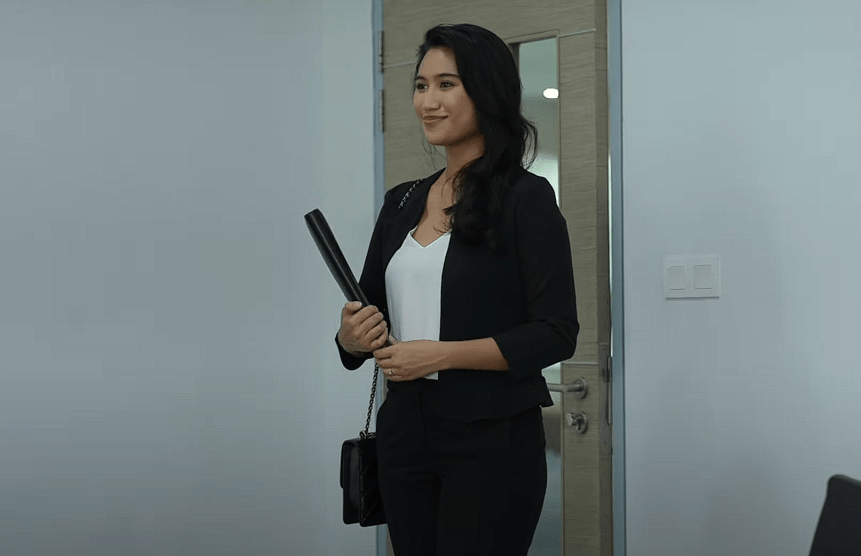
Then, What to Wear to an Interview Female: Dressing Professionally Is The Key To Success
Dress professionally for success by avoiding common fashion mistakes during a female interview. Follow these tips to ensure a polished and appropriate appearance.
When it comes to acing an interview, your appearance plays a crucial role in making a positive first impression. Dressing professionally not only shows respect for the opportunity but also demonstrates your understanding of the company culture. So, before you head out for your interview, take a moment to consider these essential guidelines for dressing to impress:
Dressing For The Company Culture:
- Research the company’s dress code beforehand to align your outfit appropriately.
- If the company has a formal environment, opt for a conservative suit or dress.
- In a more casual setting, choose a polished outfit that still maintains a professional appearance.
- Avoid overdressing or underdressing, as it may give the wrong impression about your compatibility with the company culture.
Tailored Clothing: Fit Matters
- Ill-fitting clothes can detract from your overall professional image, so ensure that your outfit fits properly.
- Consider getting your clothes tailored to accentuate your best features and create a polished look.
- Avoid clothing that is too tight or too loose, as it may appear unprofessional or sloppy.
Classic Colors And Neutrals
- Stick to classic colors like black, navy, and gray for suits, blazers, and professional dresses.
- Neutral tones are versatile and create a timeless look.
- Avoid bright and bold colors or flashy patterns, as they can be distracting and may not align with the company’s conservative expectations.
Choosing Appropriate Jewelry
- Opt for simple, tasteful jewelry that complements your outfit without overpowering it.
- A conservative watch, stud earrings, and a delicate necklace are safe choices.
- Avoid excessive jewelry, noisy accessories, or anything that may divert attention away from your qualifications.
Opting For Closed-Toe Shoes
- Closed-toe shoes are a staple for any professional outfit.
- Choose classic pumps or dress shoes that are clean and well-maintained.
- Avoid sandals, flip-flops, sneakers, or any open-toe footwear, as they can be perceived as too casual.
Enhancing Your Natural Beauty
- Keep your makeup, hairstyle, and grooming minimal and natural.
- Aim for a polished and professional look rather than a glamorous or trendy appearance.
- Avoid heavy makeup, brightly colored hair, or any style that may distract from your qualifications.
Paying Attention To Personal Hygiene
- Good personal hygiene is essential for leaving a positive impression.
- Ensure your clothes are clean, wrinkle-free, and well-pressed.
- Maintain fresh breath, tidy nails, and well-groomed hair.
Remember, dressing professionally not only shows respect and consideration for the interview process but also reflects your ability to fit into a company’s culture. By adhering to these guidelines, you can make a strong visual impact that supports your skills and qualifications, increasing your chances of interview success.
Most Related Topics You Should Read
9 Best Color to Wear for Zoom Interview : Get Noticed and Ace Your Interview
7 Best Color to Wear to an Interview Female
What to Wear for a Zoom Interview Male: Dress for Success
What to Wear for Zoom Interview Female: Dress for Success And Avoid Those Mistakes
Can You Wear Jeans to an Interview Female? Find Out How to Dress to Impress
Can I Wear Black Jeans to an Interview: Decoding Interview Attire
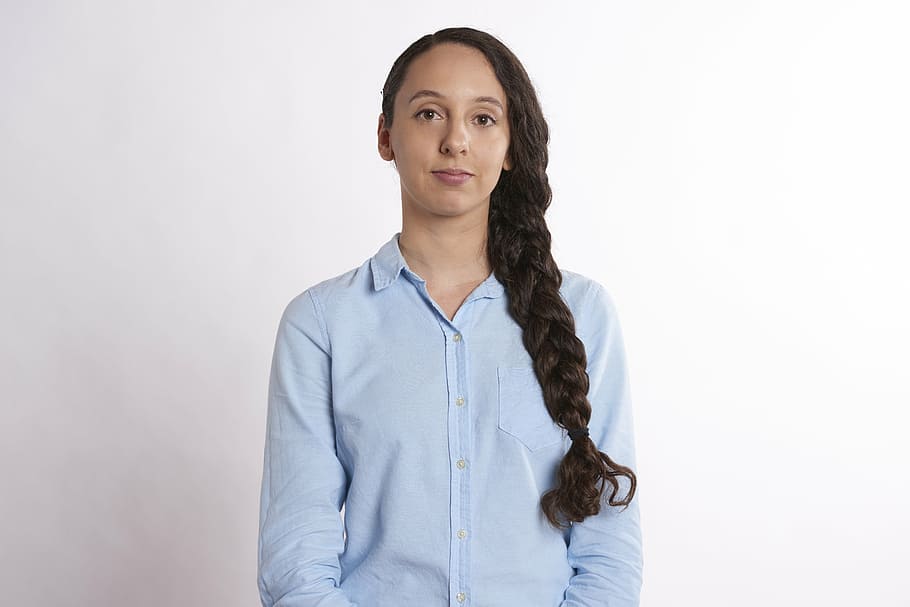
Standing Out For The Right Reasons: Interview Fashion Dos
Discover how to make a lasting impression at your next interview with our guide on what not to wear as a female. Stay ahead of the game and avoid fashion faux pas for a confident and professional look that will help you stand out for all the right reasons.
Business Casual: A Safe Bet
Business casual is a popular dress code for many interviews. It strikes a balance between professionalism and a relaxed atmosphere, allowing you to showcase your style while adhering to traditional office attire. Here are a few guidelines to remember:
- Tailored separates: Opt for well-fitting blouses, tailored trousers, or a polished skirt suit. This conveys professionalism without being too formal.
- Appropriate footwear: Choose closed-toe shoes like pumps or dressy flats that are comfortable and complement your outfit.
- Simple accessories: Keep jewelry minimal and tasteful, avoiding excessive or distracting pieces.
- Neutral colors: Stick to classic and versatile shades such as black, navy, gray, or beige. This creates a cohesive and professional appearance.
- Well-groomed appearance: Ensure your clothing is clean, ironed, and free of stains or wrinkles. Pay attention to details like neatly trimmed nails and a well-maintained hairstyle.
Smart Casual: Finding The Balance
Smart casual dress can be suitable for certain interview settings, particularly in creative industries or startups. Ensuring a smart, polished look requires striking the right balance between casual and professional elements. Consider these tips:
- Mixing dressier and casual pieces: Combine tailored pieces like blazers or dress pants with more relaxed items such as a blouse, a pair of dark jeans, or a comfortable blouse.
- Flattering footwear: Choose shoes that are stylish, comfortable, and appropriate for the occasion, such as loafers or ankle boots.
- Injecting pops of color: While maintaining a professional appearance, feel free to add pops of color to your outfit through accessories or a statement piece.
- Avoiding overly casual items: Stay away from clothing that is too revealing, worn-out, or overly casual, such as t-shirts, ripped jeans, or sneakers.
Incorporating Your Personal Style
While it’s essential to dress appropriately for an interview, incorporating your personal style can help you feel more confident and showcase your individuality. Here’s how to infuse your unique fashion sense into your interview attire:
- Statement accessories: Use jewelry, scarves, or handbags to add your personal touch to a more conservative outfit.
- Color choices: Incorporate your favorite colors or shades into your clothing, as long as they align with the professional setting and don’t overwhelm your overall look.
- Texture and patterns: Experiment with textured fabrics or subtle patterns like pinstripes or houndstooth to add visual interest to your outfit.
- Tailored fit: Prioritize finding well-fitted clothing that flatters your figure, regardless of your preferred style.
Investing In Quality Wardrobe Essentials
Building a wardrobe of high-quality essentials ensures that you’ll always have appropriate attire for interviews and professional settings. These essential pieces will provide a solid foundation for any interview outfit:
- Classic blazer: A well-tailored blazer instantly elevates any outfit, adding a touch of professionalism and sophistication.
- Versatile blouse: Choose versatile blouses in neutral colors that can be easily dressed up or down depending on the occasion.
- Tailored trousers: Invest in a pair of well-fitting dress pants that flatter your figure and can be paired with various tops for different interview settings.
- Little black dress: An elegant, well-fitting black dress can be a go-to option for more formal interviews or networking events.
- Comfortable heels: Opt for a pair of classic, comfortable heels that you can confidently wear for extended periods.
- Structured handbag: Choose a professional-looking handbag that is spacious enough to hold your essentials while adding a polished touch to your outfit.
Presenting A Polished Appearance
An interview is a chance to showcase your professionalism and attention to detail through your appearance. Here are some tips for presenting a polished and well-groomed look:
- Neat and tidy: Ensure your clothing is clean, pressed, and free from wrinkles or stains.
- Hair and makeup: Style your hair in a polished manner, whether that’s an updo or well-kept loose hair. Opt for natural-looking makeup that enhances your features without being overly dramatic.
- Minimal fragrances: Choose a subtle fragrance or avoid wearing any perfume or cologne altogether, as strong scents can be overwhelming.
Projecting Confidence And Professionalism
Your interview attire plays a pivotal role in projecting confidence and professionalism. While dressing appropriately is crucial, remember that your overall demeanor and body language are equally important. Here are some additional tips to enhance your professional image:
- Maintain good posture: Stand tall and sit upright to convey confidence and attentiveness.
- Maintain eye contact: Establish and maintain eye contact with the interviewer to demonstrate engagement and interest.
- Show enthusiasm: Display genuine enthusiasm for the opportunity by discussing your qualifications and skills with confidence and sincerity.
- Be prepared: Research the company beforehand and come prepared with thoughtful questions to ask the interviewer, showcasing your interest in the role.
Incorporating these interview fashion dos will enable you to stand out for the right reasons, projecting a professional and confident image that aligns with the role you’re pursuing. Remember, dressing appropriately is just one aspect of a successful interview. Combine it with thorough preparation and genuine enthusiasm to increase your chances of landing that dream job.
16 Tips for Choosing The Right Attire for Your Interview
Selecting the right attire for your job interview is crucial for making a positive impression. Here are some tips to help you choose the appropriate clothing:
Research the Company Culture:
Understand the company’s culture and dress code. Research their website, and social media profiles, or ask employees if possible. This will give you insights into whether the company leans more towards formal, business casual, or a relaxed dress code.
Err on the Side of Formality:
If you’re uncertain about the dress code, it’s generally safer to be slightly overdressed than underdressed. A more formal outfit can demonstrate your professionalism and respect for the opportunity.
Choose Classic and Conservative Styles:
Opt for classic, timeless pieces that convey professionalism. Stick to neutral colors like black, gray, navy, and white, as they are versatile and considered more formal.
Dress for the Role:
Consider the nature of the job you’re interviewing for. If it’s a creative or tech-oriented position, you might have more flexibility in your attire. For corporate or customer-facing roles, lean towards more traditional business attire.
Well-Fitting Clothing:
Properly fitting attire enhances your overall appearance. Clothing that is too tight or too loose can make you appear less put-together. Visit a tailor if needed to ensure a good fit.
Coordinate Your Outfit:
Your clothing should create a cohesive and polished look. Ensure that your top, bottom, shoes, and accessories work well together in terms of color and style.
Neat and Clean:
Make sure your clothing is clean, pressed, and free from wrinkles. Dirty or unkempt attire can undermine a professional appearance.
Avoid Distracting Elements:
Stay away from excessive accessories, flashy jewelry, or clothing with loud patterns that could divert attention from your qualifications.
Consider Comfort:
While looking professional is important, also choose clothing that you’re comfortable in. Being comfortable will help you feel more confident during the interview.
Minimize Fragrance:
If you choose to wear perfume or cologne, use a subtle scent. Strong fragrances can be overpowering and distract from the interview.
Pay Attention to Details:
Details matter. Ensure your shoes are polished, nails are clean, and your hair is well-groomed. These small details contribute to a polished look.
Prepare in Advance:
Choose your interview outfit well in advance to avoid last-minute stress. This gives you time to make any necessary adjustments or purchases.
Bring an Extra Layer:
If your outfit includes a blazer or jacket, it’s a good idea to bring an extra layer in case the interview location is cooler than expected.
Carry a Professional Bag:
If you need to carry belongings, choose a professional bag or briefcase that complements your outfit. Avoid casual backpacks or oversized bags.
Confidence is Key:
Ultimately, the right attire is one that makes you feel confident and empowered. When you feel good about how you look, it positively impacts your demeanor and performance.
Plan for Virtual Interviews:
If your interview is virtual, ensure that your clothing is appropriate for the camera. Choose solid colors and avoid busy patterns that might not display well on screen.
Remember that your interview attire is a reflection of your professionalism and your understanding of the company culture. Putting thought and effort into your outfit shows your dedication to the opportunity and can set a positive tone for the entire interview.
Frequently Asked Questions Of What Not To Wear To An Interview Female
Q: What Not To Wear To An Interview Female?
A: Avoid wearing overly casual clothes like jeans and t-shirts, revealing outfits, and flashy accessories when preparing for a female interview.
Q: What Are The Best Colors To Wear To An Interview?
A: Choose neutral colors such as navy blue, gray, or black for a professional look. These colors convey confidence and are less distracting to the interviewer.
Q: Can I Wear A Skirt To An Interview?
A: Yes, wearing a skirt is appropriate for an interview, especially if paired with a professional blouse or blazer. Just ensure the skirt length is modest and falls at or below the knee.
Q: Are High Heels Acceptable For An Interview?
A: While high heels can be fashionable, it’s best to opt for a more comfortable and practical shoe choice. Closed-toe flats or low-heeled pumps are classy options that will keep you comfortable throughout the interview.
Q: What are 3 things you should not wear to an interview?
A: Three things you should not wear to an interview are:
Casual Attire: Avoid wearing jeans, t-shirts, sweatshirts, or other overly casual clothing.
Revealing Outfits: Steer clear of clothing that exposes too much skin, such as low-cut tops or short skirts.
Excessive Accessories: Skip wearing excessive or distracting accessories like loud jewelry or large statement pieces.
Q: What is unprofessional not to wear to an interview?
A: It’s unprofessional not to wear attire that is too casual, revealing, or distracting. Avoid jeans, overly casual tops, short skirts, and excessive accessories.
Q: What is inappropriate to wear for an interview female?
A: Inappropriate attire for a female interviewee includes revealing clothing, overly casual outfits like jeans and t-shirts, and flashy or distracting accessories.
Q: What is unprofessional to wear to an interview?
A: Unprofessional attire for an interview includes casual clothing like jeans and t-shirts, overly revealing outfits, and clothing with visible wear or wrinkles.
Q: What colors avoid interviews?
A: Avoid overly bright or flashy colors for interviews. Stick to neutrals like black, gray, navy, and white, as they are more professional and versatile.
Q: What is the best color to wear to an interview?
A: Neutral colors like navy, black, gray, and white are generally the best choices for interview attire as they convey professionalism and versatility.
Q: Are jeans OK for interview?
A: Jeans are generally not suitable for interviews, as they are considered too casual. It’s better to opt for more professional attire like slacks or a skirt.
Q: Can I wear all black to an interview?
A: Wearing all black to an interview can be acceptable and professional, especially if it’s paired with well-fitting, conservative attire. Just ensure the outfit is appropriate for the company culture and role.
Q: Can I wear a blouse to an interview?
A: Yes, wearing a blouse to an interview can be a good choice, especially if it’s a conservative and professional style that complements your outfit.
Conclusion For What Not To Wear To An Interview Female
Dressing appropriately for a job interview is crucial in leaving a lasting impression. By understanding what not to wear, female candidates can avoid common fashion mistakes and present themselves in a professional manner.
Avoiding revealing and overly casual attire, opting for tailored clothing that fits well, and choosing conservative colors and patterns are all important aspects to consider. Accessorizing minimally and keeping makeup and hairstyles simple can also contribute to a polished appearance.
Remember, the goal is to showcase your qualifications and skills, and your clothing should enhance that image, not detract from it. By following these guidelines, female candidates can project confidence, competence, and a strong professional presence, increasing their chances of success in the job interview process.
Reference –
https://www.indeed.com/career-advice/interviewing/what-not-to-wear-to-a-job-interview

